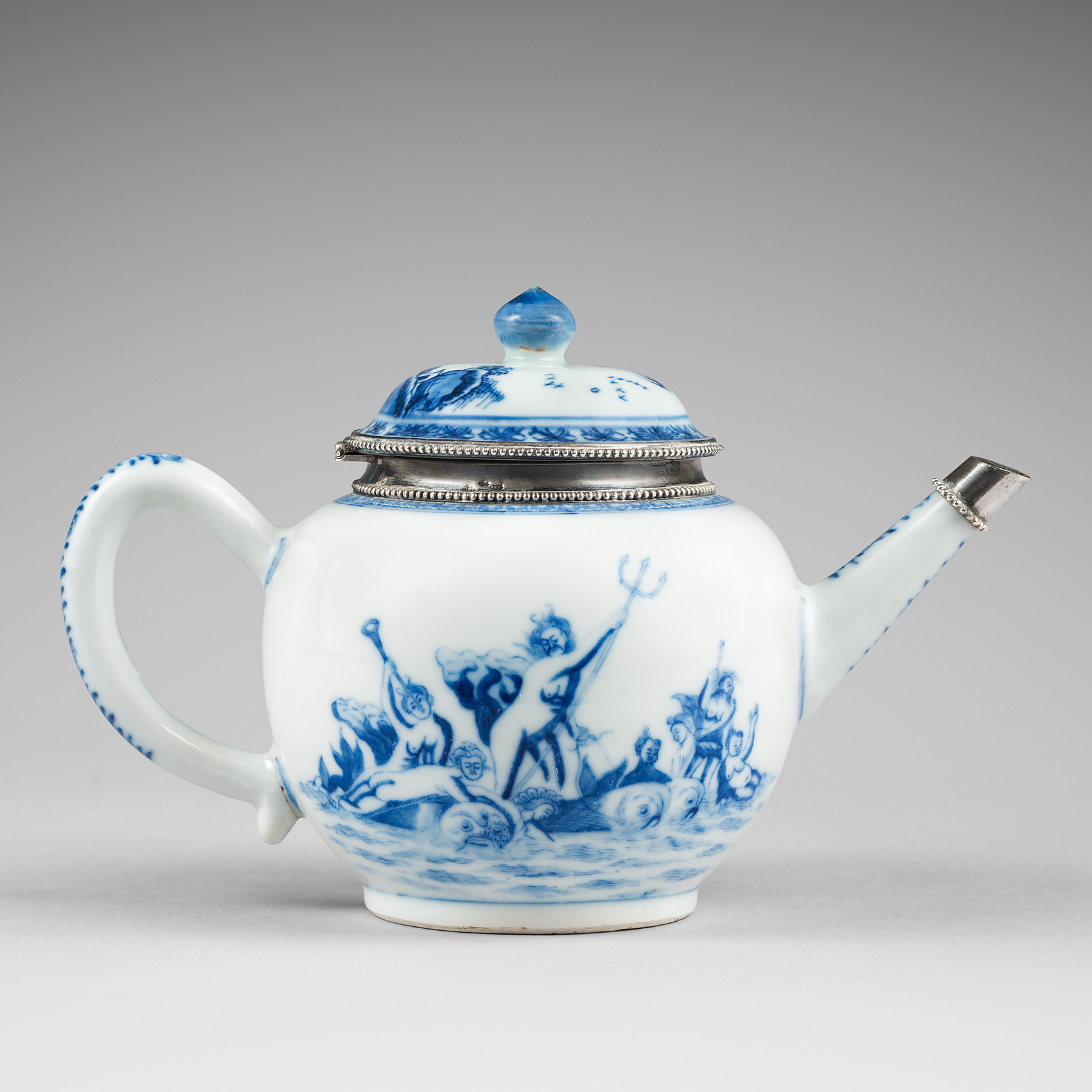The design depicts Neptune, the God of the Sea, standing with his triton in the center of the design with a number of other figures to his left and right with three large fish or whales at his feet. The lower section of the design depicting the sea. The border with a diaper design.

